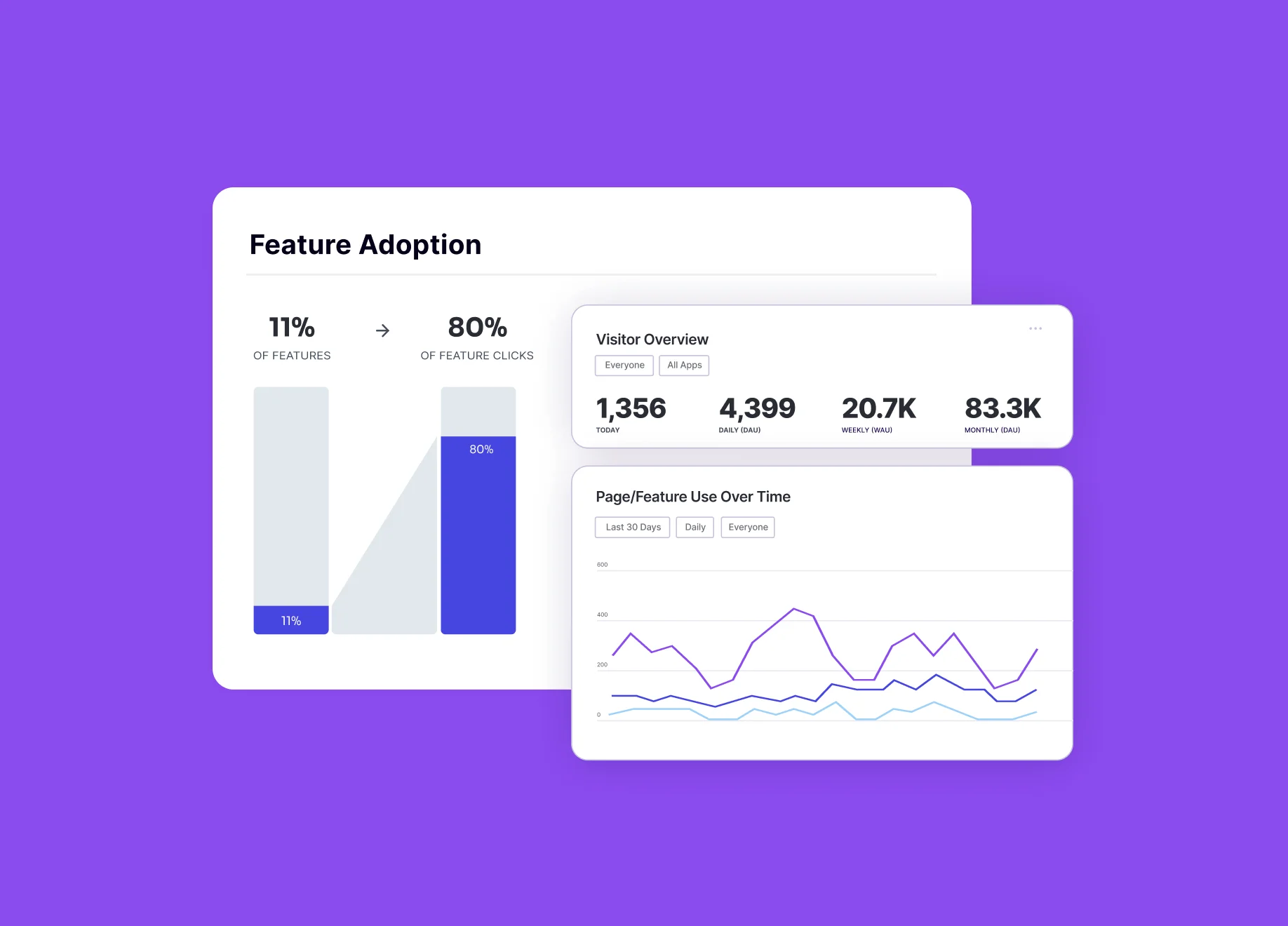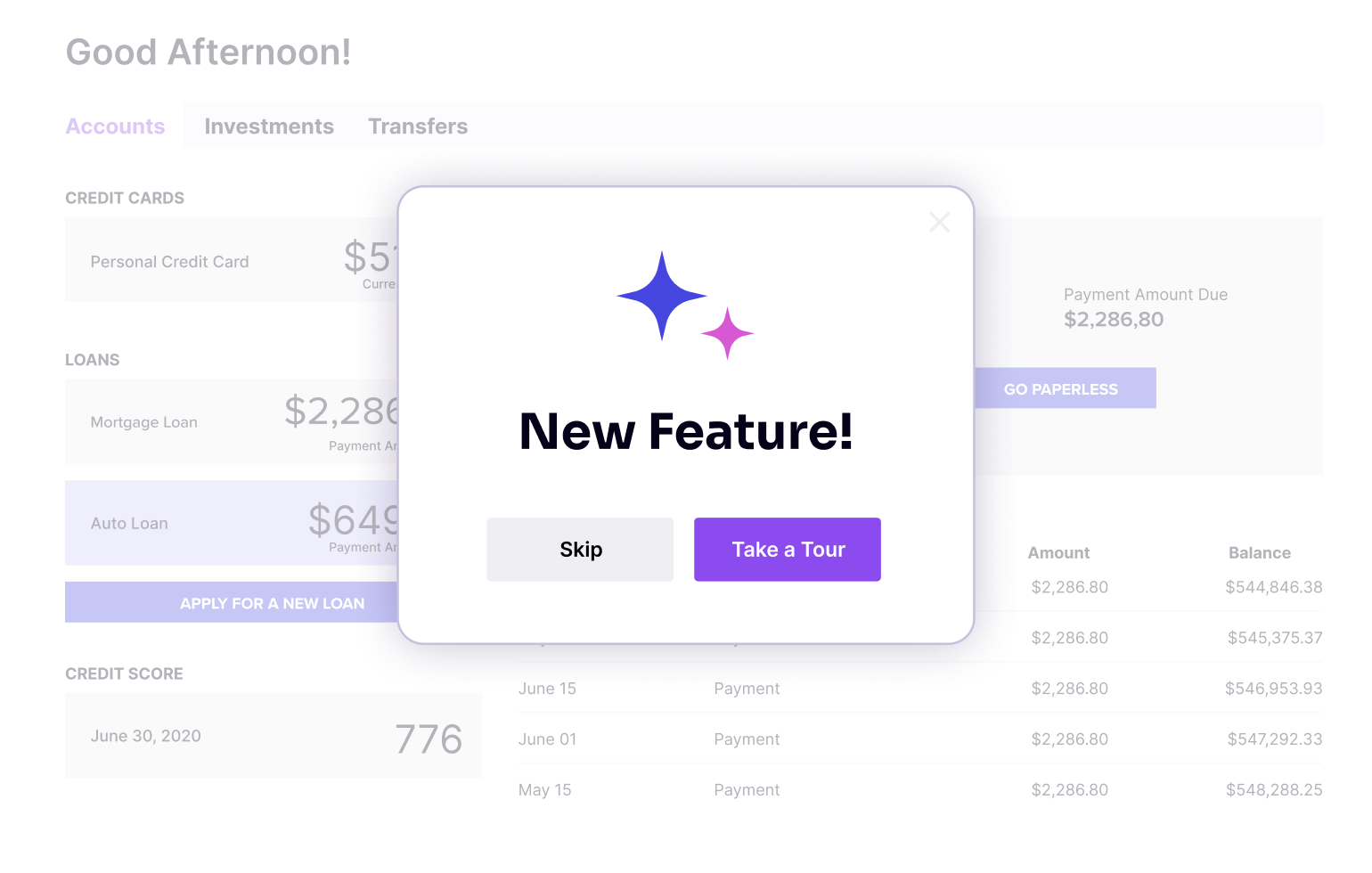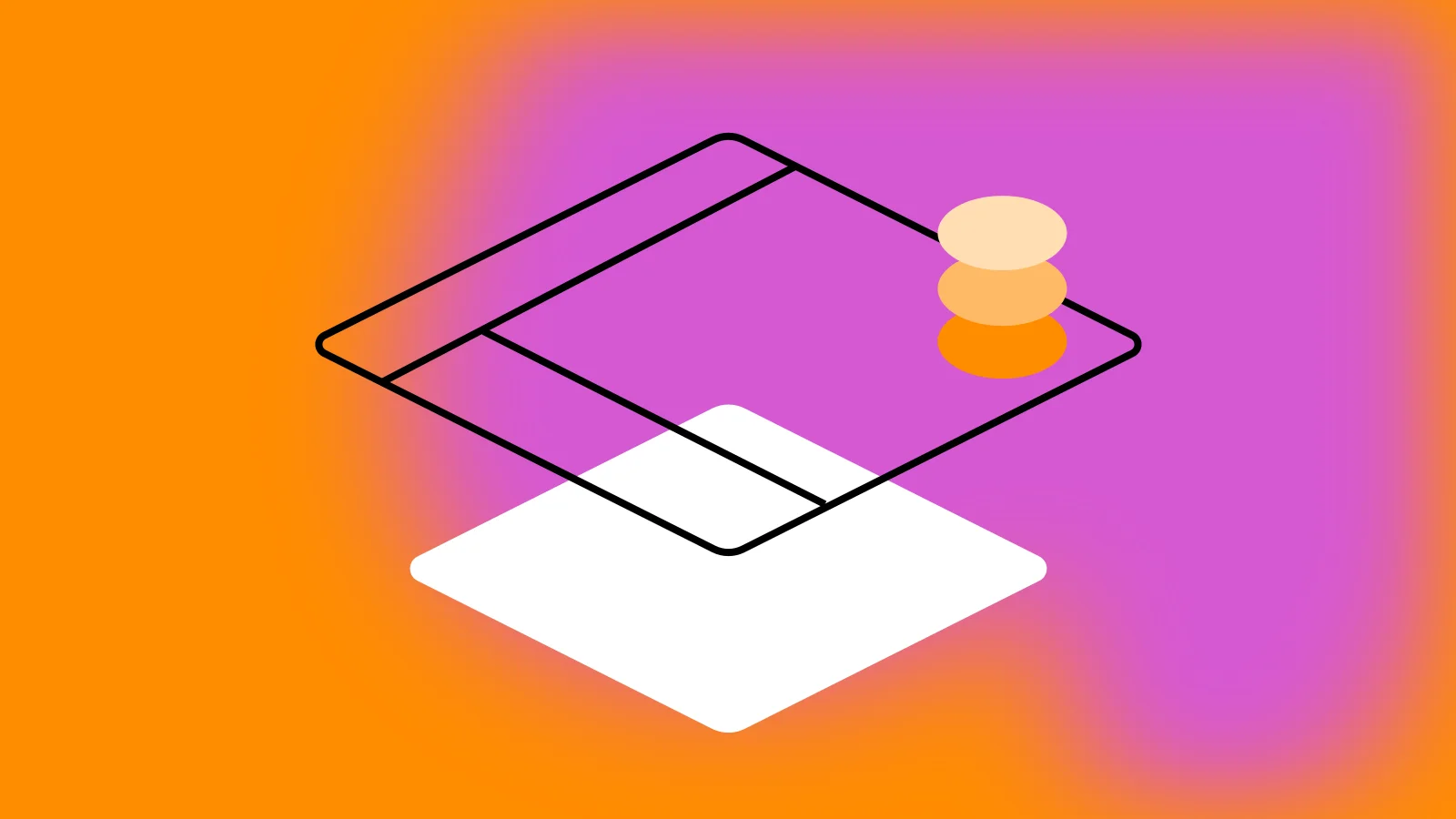目次
機能の定着化とは何ですか?
Put simply, feature adoption measures the usage for a software product’s specific features. The more features a user adopts, the more value they receive, and the less likely they are to abandon the product, making feature adoption a key metric for retention and expansion.
機能の定着率はどのように測定できますか?
Like product adoption, this is a user activation metric. Feature adoption is measured by interaction with a specific feature, rather than login. Typically expressed the same way as product adoption—MAU, adoption rate—with similar considerations for stickiness in defining activation.
機能の定着率は、ログイン数を基準に算出されます。
月間機能定着率(%)=[機能のMAU / 月間ログイン数]× 100
機能の定着化が重要なのはなぜですか?
サブスクリプションベースのソフトウェアライセンスへの移行に伴い、ソフトウェアはもはや一度だけ購入されるものではなくなりました。顧客がサブスクリプションを更新する際に繰り返し購入され、時には月単位で頻繁に購入されるようになりました。そのため、ユーザーがプロダクトの価値をできるだけ早く認識し、継続的に価値を受け取り続けることが重要になります。新機能は、ユーザー体験により価値を付加するチャンスですが、それはユーザーがこれらの機能を認識し、それを最大限に活用する方法を理解している場合に限ります。
反対に、使用されていない機能はすべて、顧客がお金を払っているにもかかわらず、そこからの価値を得られていない部分です。これは顧客が感じる価値を低下させ、最終的には現在のサービス/価格水準で更新する意欲を低下させることになり、場合によっては完全に意欲がなくなることにつながります。
新しい機能の追加は、付加価値を高めるチャンスです。しかし、使われない機能は、逆効果をもたらすこともあります。このため、カスタマーサクセスマネージャーは、機能の定着化に集中することが多いのです。リテンションや拡大といった重要な指標は、価値実現までの時間の最小化が条件となるためです。使われていない機能にお金を払うことは、顧客が感じる価値を低下させ、最終的には現在の価格水準で更新する意欲を低下させたり、場合によっては完全になくなることになります。
Oktaはユーザーにセルフサービスを促すことにより機能の定着率を18%増加させました
機能の定着化の指標
機能の定着化アナリティクスでは、プロダクトマネージャーとカスタマーサクセスマネージャーの取り組みを、最も重要な機能の性能を向上させることに集中させます。機能のリリースを測定する場合、プロダクトマネージャーとカスタマーサクセスマネージャーは、次の4つの主要な機能の定着化アナリティクスの側面を考慮する必要があります。
- 定着化の幅:ユーザーベースまたは対象ユーザーセグメント全体で機能がどの程度広く定着していますか?その機能は、対象ユーザーの大多数によって取り上げられましたか、それともごく一部にすぎませんか?新機能の魅力は、その定着化に表れます。
- 定着化の深さ:主要なユーザータイプはどのくらいの頻度で機能に触れますか?望ましいプロセスを適用して粘着性を示していますか?予期しない方法で行動していますか?定着化の深さは、継続的なニーズや使いにくさとの関連性を示すことがあるので、よく観察して、可能であればフィードバックを求めることが重要です。
- 定着化までの時間:顧客が新機能の使用を開始するのにどのくらい時間がかかっていますか?ある機能を知ったとき、ユーザーはすぐに試していますか、それとも数日、数週間待ってから使っていますか?機能の定着化が早ければ早いほど、既存の問題に対応できる可能性が高くなります。
- 定着化の期間:ユーザーは、機能について学習した後、どのくらいの期間機能を使用し続けていますか?数回試しただけですか、それとも数か月、数年単位で使い続けていますか?期間はリテンションと合致し、その機能が最初の目新しさを超えて本当の価値を提供しているかどうかを示すものであり、機能の更新が必要な時期を知らせるものでもあります。
The definition of success for these four measures will be different for every company, but you can use tools like product benchmarks to see how your feature adoption compares to companies of a similar size or stage. These metrics also present an opportunity to combine quantitative and qualitative data to understand why users are (or aren’t) adopting certain features, and what they think about a particular feature.
As you track the quantitative side of this with a product analytics platform, look for opportunities to collect feedback–bonus points if you can collect it while users are interacting with a new feature for the first time. By collecting feedback in-app, you’re more likely to get a response that reflects what customers thought about a specific feature right when they used it. With both types of data, product teams can get a more holistic view and which enhancements or changes will have the biggest impact.
ヒント:ユーザーレベルとアカウントレベルで機能の定着率を確認するようにしてください。アカウントレベル(特定の会社)で測定することで、役割上その機能を必要としないユーザーを分離することができます。
機能のお知らせが与える効果は?
New features will never see significant adoption if the user base is unaware of them. So discoverability and the announcement process are important parts of driving feature adoption. Most companies employ several channels for communicating updates: blog, email, social, customer meetings, and in-app notifications.
機能の定着化戦略の策定には、いくつかの考慮事項があります。1つ目は関連性です。ユーザーは、自分にとって重要なお知らせに反応する可能性がはるかに高くなります。すべてのユーザーに深く関連する機能はほとんどないため、お知らせは最も適切なユーザーセグメントに合わせて調整する必要があります。2つ目の考慮事項は、望ましい行動です。お知らせを読んだユーザーに何をしてほしいですか?お知らせを通知およびアプリ内ガイダンスとして配信することで、企業は新しいリリースが価値を提供しているかどうかを測定し、機能の展開に伴って発生することが多いサポートコストの急増を抑制することができます。
Nelnet, an education technology platform, noticed an uptick in support calls from parents seeking tuition statements for tax purposes at the beginning of the school year. The team implemented an in-app guide to direct users to their annual payment summaries, and adoption of that specific feature rose 200%.
これらの側面で定着化を成功させる要因は、ユースケースによって異なりますが、機能リリースの結果を評価する際には、これら4つの要素をすべて考慮することが重要です。
機能の定着率を高める方法
機能の定着化を測定することは重要ですが、それはまだ道半ばにすぎません。データを収集し、ユーザーが採用している機能と採用していない機能に関するインサイトを形成したら、機能の定着化を改善するために使用できる戦術があります。私たちが推奨する4つの方法は次のとおりです。
- Announce new features in-app: One of the best tools for announcing new features is your product itself. When you deliver feature announcements in-app using pop up guides or tooltips, you can ensure you’re reaching users when the information is most relevant. In the end, you want to make it as easy as possible for customers to find and use the new feature you’re promoting.
- Make the value (and desired action) clear: As you create in-app messages or other communications about a feature, use straightforward language that makes it clear what the value of this feature is. Similarly, be sure to clearly state or point users to the next action you want them to take–whether it’s to immediately use the feature, read documentation about it, or watch a guided demo.
- 告知後も定着化を促進する: 新機能を告知したら、そこで作業が終わるわけではありません。特に、複雑な機能や、ワークフローで複数のステップが必要な機能については、アプリ内でウォークスルーを作成してユーザーを目的のステップに誘導することが有効です。
- コミュニケーションのターゲットを絞る:プロダクトにはさまざまなタイプ(例:会社での役割、権限、技術的熟練度など)のユーザーがいるため、すべての機能がすべてのユーザーに関連するわけではありません。そのため、ユーザーをセグメント化し、さまざまなグループに対して新機能に関するアプリ内コミュニケーションのターゲットを絞る必要があります。機能をリリースするたびに、ターゲットとなるユーザーが誰なのか、また、さまざまなタイプのユーザーに対してどのようにコミュニケーション戦略を調整する必要があるのかを考えてください。
機能の定着化について、もっと詳しく知りたいです。
For those looking to dig a little deeper, Pendo has published a blog post “The two sides of driving feature adoption” as well as content on how to take a product-led approach to feature adoption.






